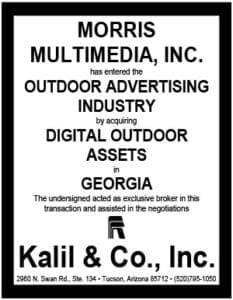
President Trump’s infrastructure plan calls for a shift from federal control and funding to states and localities.
The 53-page plan released by The White House February 12 did not specifically target the Bonus Program. However, on Page 23, the plan encouraged states to repay federal highway funds for the sake of flexibility, mentioning “highway beautification standards” and other controls.
Therefore, the Administration’s effort to ratchet back regulations could be an opening to phase out the Fifties-era “Bonus Program” that preceded the Highway Beautification Act of 1965.
In the Fifties, the federal government offered extra highway funds to states that controlled billboards (Bonus payments). The program withered; no State has received Bonus money since the Eighties.
Twenty-three states remain in the unfunded program, and some are interested in getting out, such as Illinois. To exit the program, states would have to repay the federal government for past Bonus payments. Iowa withdrew from the Bonus Program in 2006. The change resulted in a small number of new billboard permits (37).
Bottom line: states can get out of the Bonus Program now, and a handful of states have pulled out. The President seemed to put a spotlight on states exiting an outdated, unfunded billboard program.
The Trump Plan
The President called for $200 billion in federal funds aimed at stimulating $1.5 trillion for infrastructure over 10 years. Half that money would be a grant program to incentivize non-federal spending including private investment.
Trump called for speedier construction and more flexibility for states, such as allowing more tolling and full-service food/fuel plazas on the highways.
Opponents said Trump’s plan would do little to address America’s infrastructure needs, while shifting the burden to hard-pressed state and local governments and setting up a scramble for scraps.
Privatizing rest areas is opposed by interests worried about harm to their existing enterprises located near highways: truck stops, convenience stores, gas stations, and restaurants.
Commercialization of rest areas on the right of way would allow government to pick on-road concessionaires who behave like monopolies, said NATSO, representing travel plazas and truck stops.

[wpforms id=”9787″]

















